Mike Tufano wanted his Green Hornet clone to be different from all the other Green Hornet clones out there.
By Al Dente Photos by TheBruntBros
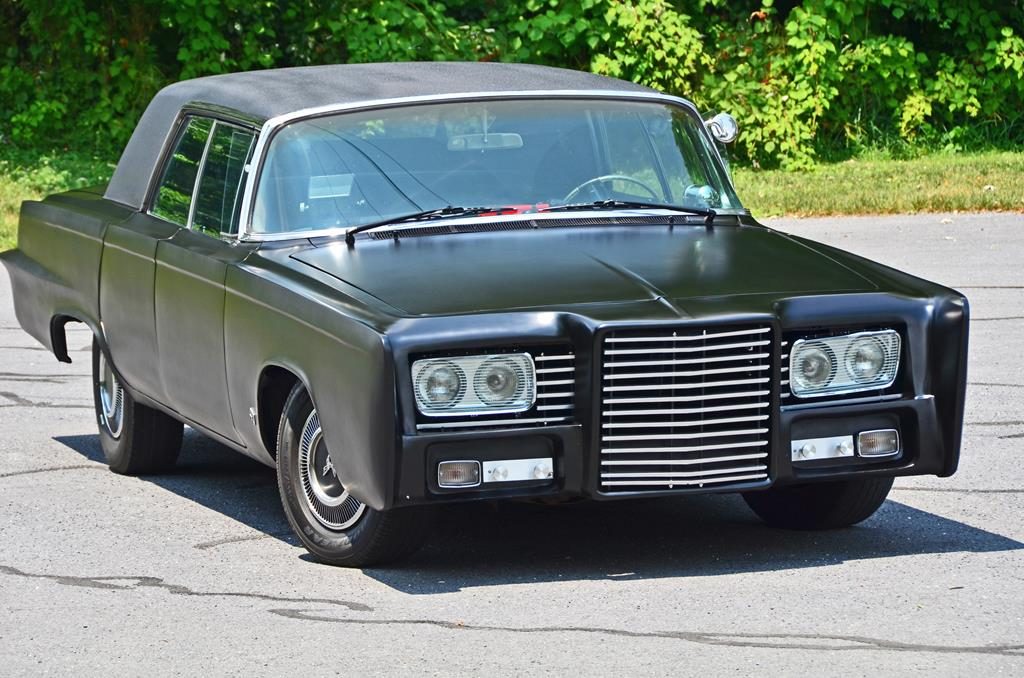
’66 Imperial is transformed into a replica of the Green Hornet’s Black Beauty ride of the ’60 TV show. Three-piece fiberglass body kit consists of the front and rear clip and the roof extension. Grille is handmade from Lowe’s aluminum stock (on sale). Park lights are ’70 Duster while billet aluminum “coat hooks” were found cohabitating in the bottom of Mike’s toolbox.
Before there were Trekkies, there were (and still are) Green Hornet groupies. This super hero got his start in the 1930s radio series, debuted in a film series in the ‘40s and filled the comic book pages starting in December, 1940. The Green Hornet was featured in a TV series in the 1960s and gained even more popularity in a 2011 feature film. Like Batman and his tricked-out Batmobile, the Green Hornet had his special ride—the Black Beauty. The TV series Beauty was a 1966 Imperial built by Dean Jeffries. The movie showed a version of the car different than the one on TV. There are probably a dozen or so Black Beauty TV car replicas or clones around the country. Most, if not all are show cars, detailed down to the smallest fastener. All they do is roll on and off trailers. Those guys are living in the past. Mike Tufano is not one of them
As a kid, Mike was always into the Green Hornet and the Black Beauty. The Corgi model of the car was his favorite toy. He still owns it, pushing it around making motor noises when no one is looking. Mike lives in Lace Township, NJ, home of Gotham Supercars. They make custom Batmobile replicas—fiberglass body kits made from molds off the original TV series car. The shop has cranked out 6-7 Batmobiles for well-heeled customers. Mike, a regular “working guy” liked those customs but knew he could never afford one.
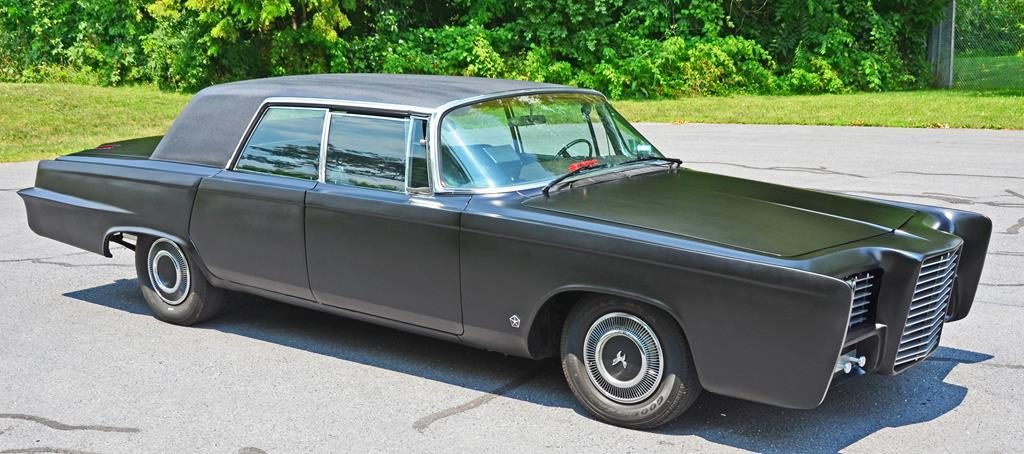
Expensive custom vinyl top was nixed in favor of cheap truck bedliner. Can’t tell the difference, and Mike can strap stuff to his roof without fear of damage. Fender skirts are on Mike’s “to do” list. Car has rolled up 50K miles as Beauty on stock ’66 Imperial drivetrain.
Gotham had picked up a ’66 Imperial and through their connections, acquired up a 3-piece fiberglass body kit of the Black Beauty that was made from molds off the TV series car. The shop stripped down the Imp and attached the fiberglass parts—front and rear clip and extended roof that tunneled in the backlight. Mike would stop by occasionally to see how the car was coming along. The owner was building it for himself to promote his business—the same thing he did with his first Batcar. One day, Mike noticed the Imperial pushed out of the shop and parked by the side of the building, taking a backseat to more pressing (paying) work. ‘Course projects are always cheaper than completed cars, and Mike started pestering the owner about selling the car. Persistence and nagging usually pay off and Mike landed a great deal. But his work was cut out for him. Mike was going to build this action hero car his way—not a show car, but a driver crimefighter albeit a low budget one—just the ticket for catching cheap crooks. Maybe not faster than a speeding bullet, the Imperial certainly had enough beans to keep up with those malfeasants in traffic.
The front and rear clips just had holes cut out for headlights, parking lights, grille and taillights. There was no structure behind them. The car came with a piece of red Plexiglas in the trunk for make your own taillight lenses. There also was a plain sheet of fiberglass that you’d cut a small rectangular window and glue over the backlight. I was supposed to be a bulletproof shield that in real life would maybe stop a low-powered BB or spitballs. Mike had limited experience fabricating and worked out of his home garage using just hand tools and no welder.
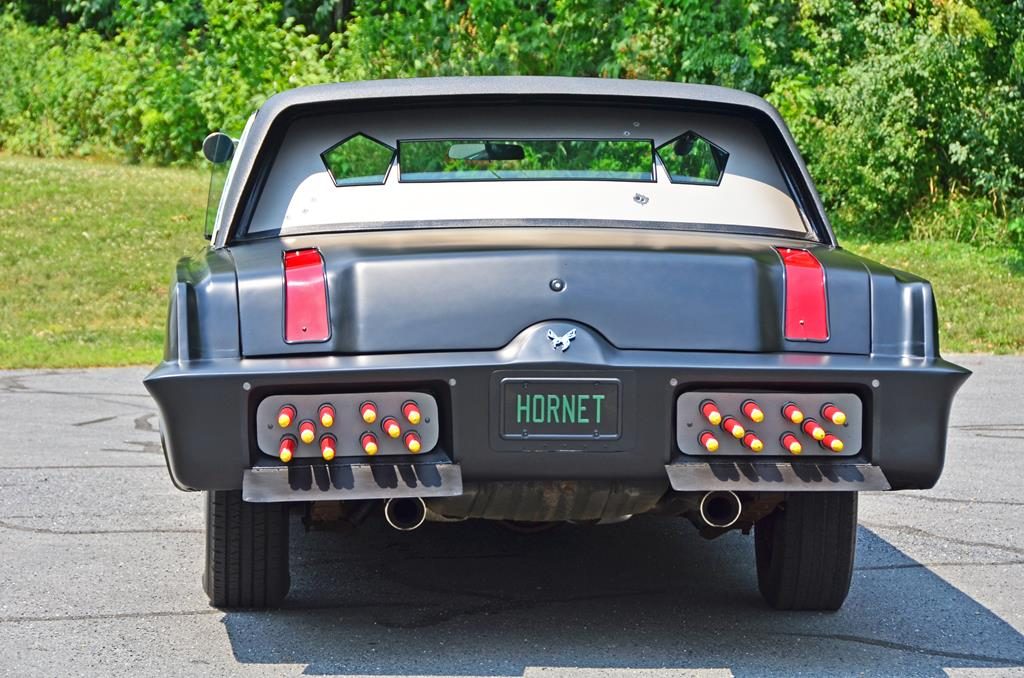
The cops said Mike couldn’t have live firing rockets out back, so Mike made these out of PVC pipe, expandable foam Bondo and C-4. Mike’s son, Mike Tufano Jr., laid out the backlight cover design on graph paper as a school geometry project. The Pentastar design, reflecting Mike’s all-Mopar family, was transferred to the backlight fiberglass panel that came with the body kit. Taillights are ‘90s Buick taillight housings mounted vertically to fit body kit openings. Lenses are hand formed from Plexiglas.
The first order of business was to go through the car mechanically to make sure the brakes work and that it would start and run. Under the hood was the stock 440 4-barrel, kind of grungy and not worth any photos. Engine detailing was way down the list if it was on the list at all. Mike points out that he has four other Mopars that he works on including a ’66 Charger show car. So when he gets $100 in his car budget, he has to spread it around for all of his projects. He says a lot of the parts for the car came from stuff lying around in his garage and items he picked up at swapmeets. Tough, though, to find a vendor that stocks bolt-on parts for a Black Beauty. Two great parts sources for raw aluminum and such were Lowe’s and Home Depot. If they were advertisers we’d give them a plug but they aren’t. Mike hand built the grille from Lowe’s aluminum rod.
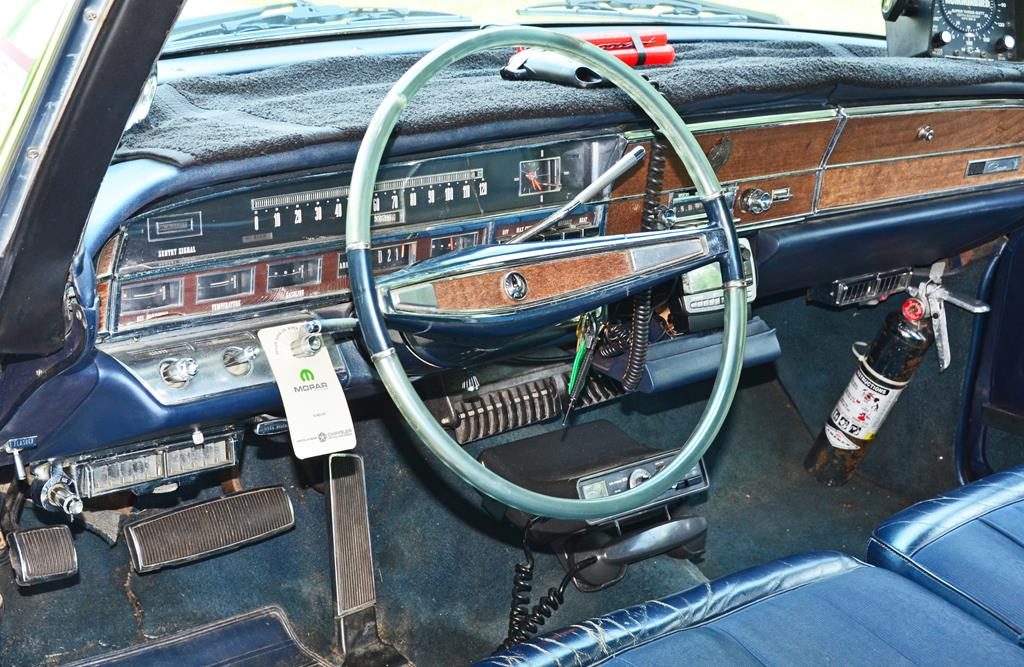
Interior is supposed to be black but the stock gut was in good shape that Mike let it go for now and probably for later, too. He keeps a few sticks of dynamite on the dash … just in case.
Mike would shape aluminum pieces by constructing wood bucks, notching the back of the aluminum and hammering it over the buck to form the angles. Trial and error. He fab’d the header panel and all the brackets to hold things together. Not experienced in welding aluminum, he epoxied pieces together. Headlight buckets and the associated wiring came from the swaps. Mike liked the ’70 Duster parking lamps but they were integral with the Duster grille. Mike picked up a grille and ground away everything that wasn’t parking lights. The taillights were a bit trickier because of the custom shape. Mike scoured the boneyards for something that would work and came upon a ‘90s Buick Roadmaster. The taillights were horizontal and wrapped around the back to the quarters—looked like the same angle although Mike’s lights were vertical. He made the housings fit and then formed his lenses from the red Plexi sheet. Wiring was a problem. Mike’s son asked him why it took 6 hours just to hook up one parking light.
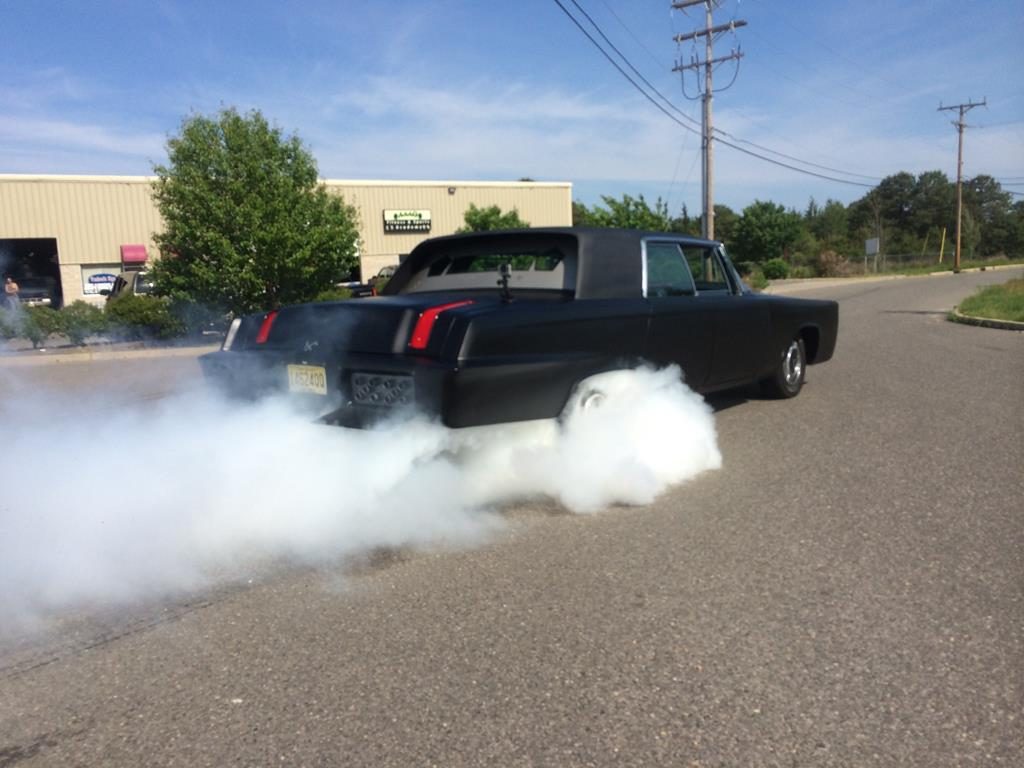
Impy is no slouch when taking off after the bad guys or when Mike is late for supper.
The front end shows two aluminum protrusions. Mike doesn’t know what they were for originally, maybe coat hooks. They are billet aluminum. He’s had them sitting in the bottom of his toolbox since he was in high School. They fill the space nicely between the grille and the park lights. Eventually, they will be replaced by rockets. The Black Beauty on the Green Hornet TV show had similar protrusions on the front. When the car pulled into Hornet’s secret garage, clamps would come out from garage floor and latch onto these “handles. The garage floor would rotate and the Beauty would be hidden under the floor while the regular white car would rotate up. The scene was done using half-scale models, you can tell if you look closely. It was a low budget deal.
The TV car had a vinyl roof, but Mike was quoted a price into the thousands for a custom roof. For that kind of money, he says, he could buy a new engine with a blower. Conferring with his painter and doing a bit of experimenting, Mike found that spraying the roof with truck bedliner gave almost the same effect, only there are no seams.
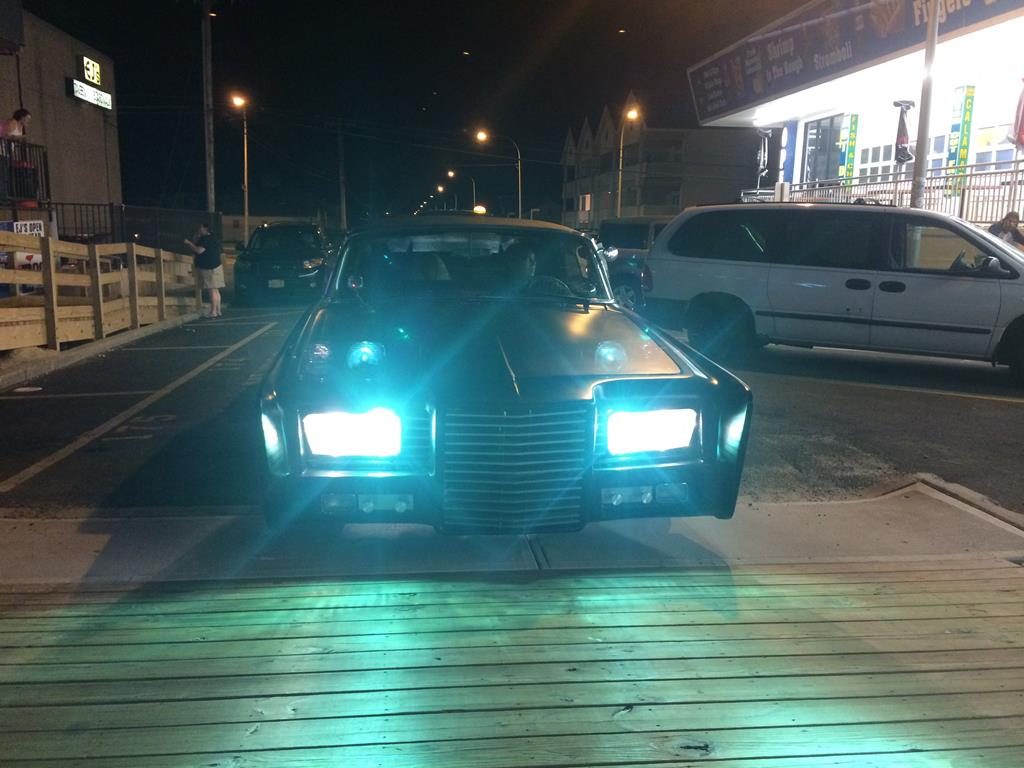
Mike found green projector lights at Carlisle. He uses green for his high beams and clear for his lows. He’s never been hassled over the lights. He just tells the cops he’s the Green Hornet and he needs the green lights, and they give him a pass.
The wheels were another story, but one we’ll give you here instead of spreading it out over three issues like one of E-booger’s tech features. The TV car rolled on a set of special Appliance Apache wheels. But a set today is horribly expensive—even used and beat up. Moreover the wheels were designed for the weight of a Corvette or Camaro, not a behemoth Imperial. They would have been fine to roll the car on and off a trailer, but Mike didn’t trust them to stand up to Imperial road use at freeway speeds. He found an Australian company by accident on the Internet that made aluminum Hornet emblems. Mike bought a bunch and set them in the center caps of the stock Impy wheels.
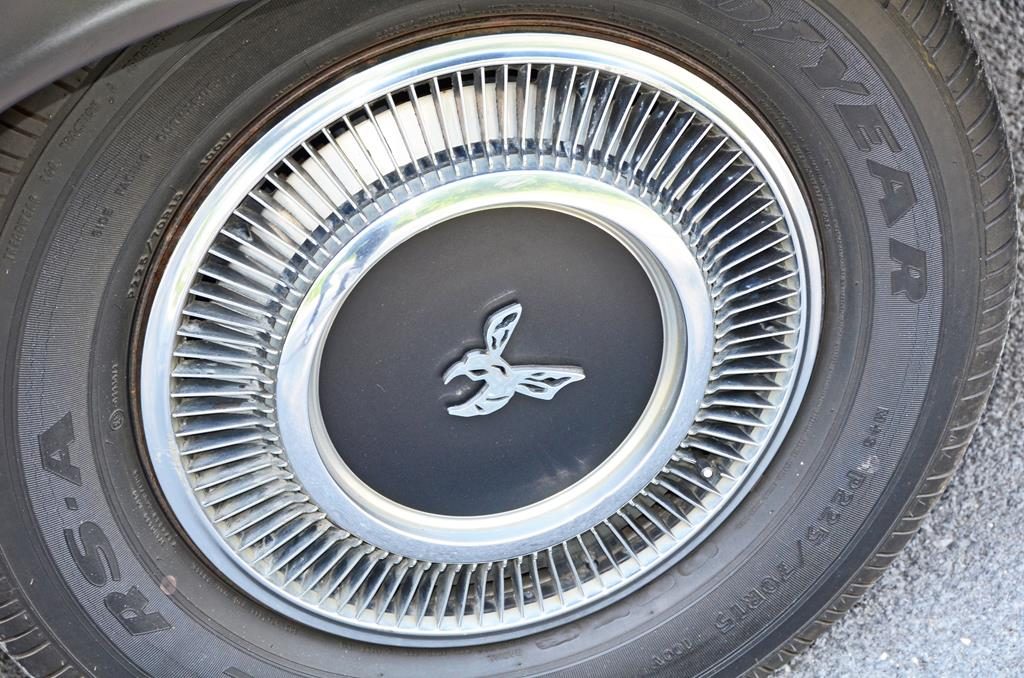
Hornet emblems were found on eBay from a company in Australia. Mike set them in the stock Imperial center caps.
Mike’s rolled up some 50,000 miles on his Black Beauty Imperial. More often than not when he looks in his mirror, the guy behind him is taking pictures of his car. And unbelievable as it sounds, Mike has had cars pull up alongside him on the highway going 60+ mph and the driver snaps a selfie of himself and the Beauty. Is this nuts or what?
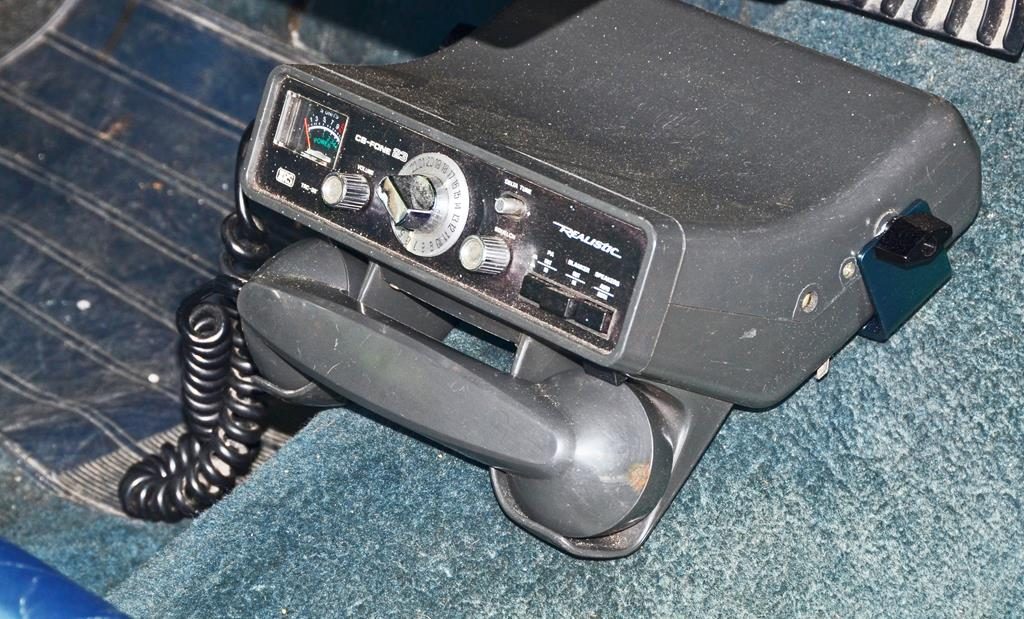
Period car phone (Realistic CB-Fone) connects Mike to headquarters and his wife’s shopping needs. Research found that the Green Hornet was a regular customer at Radio Shack where he bought a lot of his trick car stuff.
What else can we say about a car like this except to quote a notable sports figure of our time; “Float like a butterfly, sting like a hornet,” (or something along those lines.)
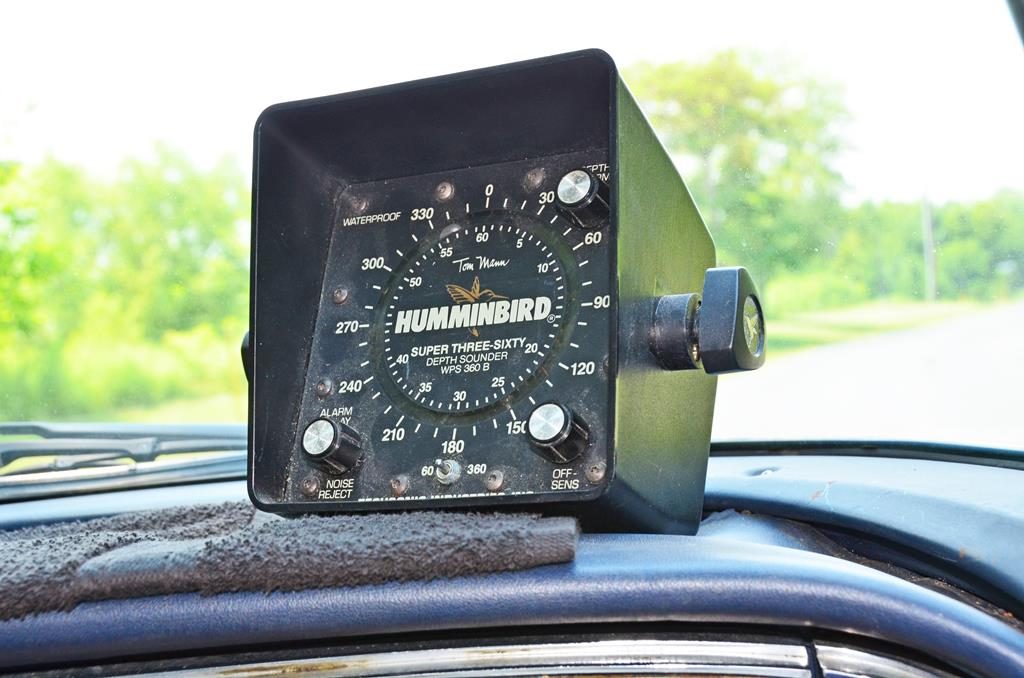
Hornet Scope is cleverly disguised as a fish finder. Mike says the function of the unit is classified, but it comes in handy when driving into a lake or fording a flooded stream.


I was all about the Green Hornet when I was a kid. Is there a source for the fiberglass panels? Would love to recreate this car. I have the Imperial just need the parts!
Sorry Greg-
I don’t have a source for them.
Cliff